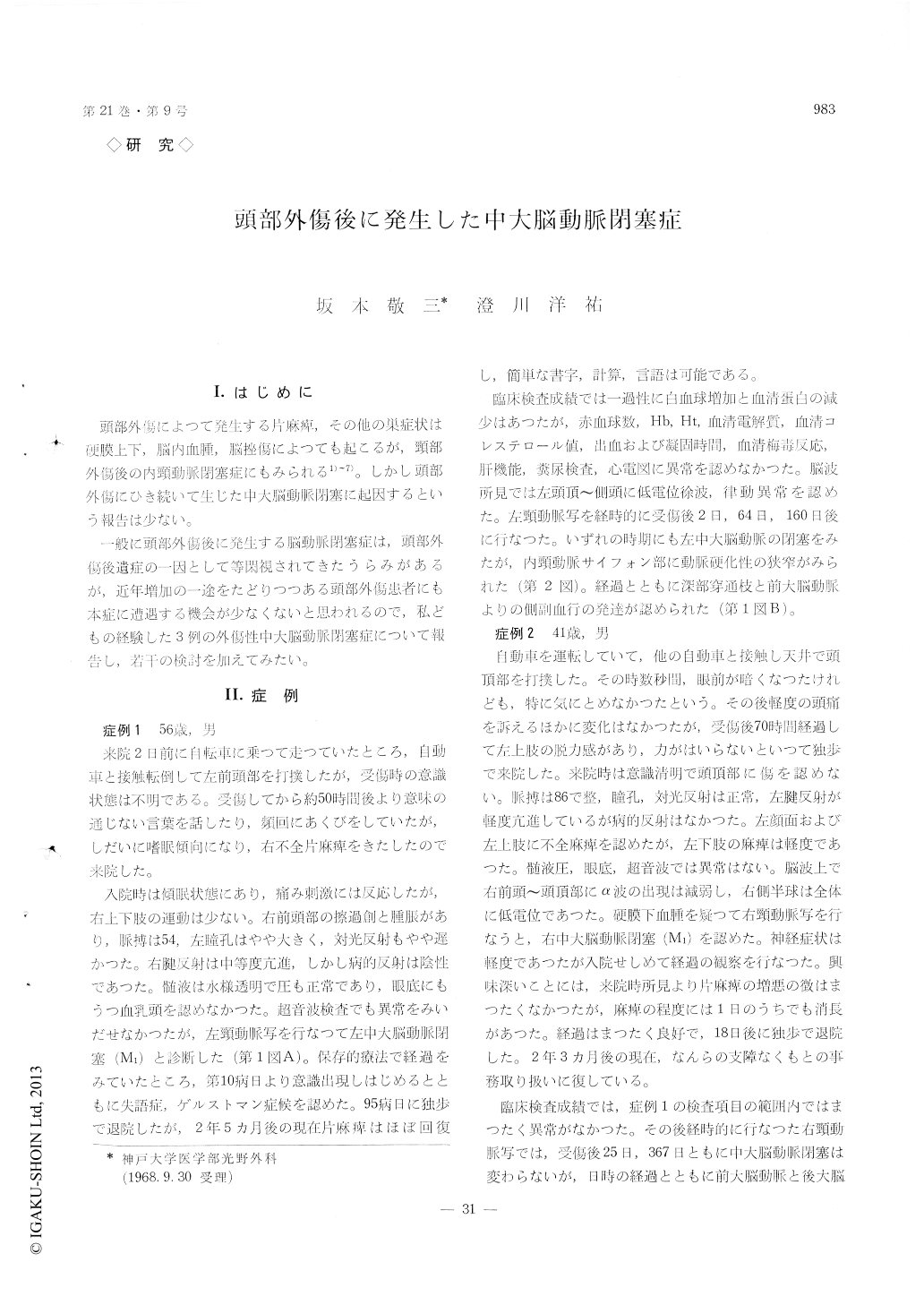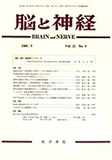Japanese
English
- 有料閲覧
- Abstract 文献概要
- 1ページ目 Look Inside
I.はじめに
頭部外傷によつて発生する片麻痺,その他の巣症状は硬膜上下,脳内血腫,脳挫傷によつても起こるが,頸部外傷後の内頸動脈閉塞症にもみられる1)〜7)。しかし頭部外傷にひき続いて生じた中大脳動脈閉塞に起因するという報告は少ない。
一般に頭部外傷後に発生する脳動脈閉塞症は,頭部外傷後遺症の一因として等閑視されてきたうらみがあるが,近年増加の一途をたどりつつある頭部外傷患者にも本症に遭遇する機会が少なくないと思われるので,私どもの経験した3例の外傷性中大脳動脈閉塞症について報告し,若干の検討を加えてみたい。
Three cases of middle cerebral artery occlusion (56 year-old male, 41 year-old male and 52 year-old male) following closed head injury were reported.
In this report we have discussed the clinical, neu-rological, radiological and pathogenetic features of this condition together with a review of cases in the literature.
Although the development of hemiparesis and other focal cerebral signs after the closed head injury often suggests an epidural, subdural or in-tracerebral hematoma, cerebral contusions and oc-clusion of the internal carotid artery, it is important to differentiate them by using carotid angiography of these lesions.
The possible pathologic factors in the first two cases, a mural thrombus from the carotid siphon to the middle cerebral artery and a thrombus formation in the middle cerebral artery following the continu-ous spasm at its main stem, may be considered by the radiological and clinical features. The third case was verified a dissecting aneurysm of the middle cerebral artery by autopsy.

Copyright © 1969, Igaku-Shoin Ltd. All rights reserved.


